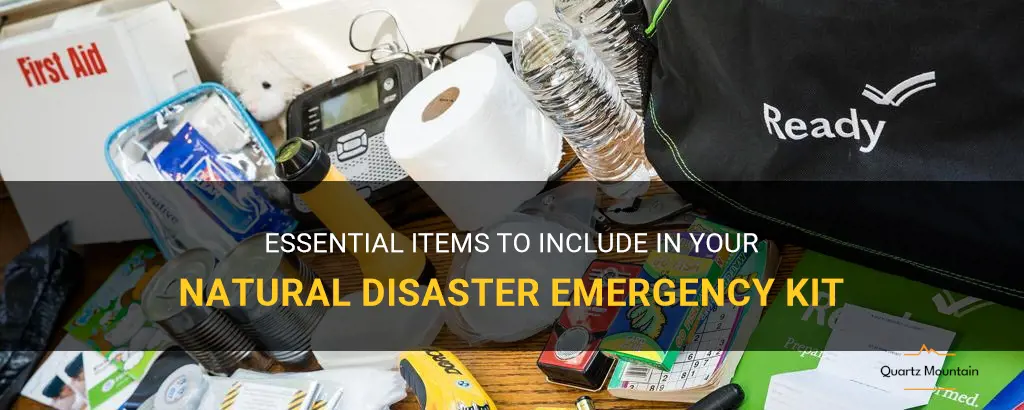
Natural disasters can strike at any moment, leaving us vulnerable and unprepared. From hurricanes to earthquakes, wildfires to floods, it is crucial to have an emergency kit ready to go at a moment's notice. In times of chaos and uncertainty, having the essential items in your natural disaster emergency kit can help you and your loved ones stay safe, comfortable, and prepared. Whether you live in an area prone to these disasters or simply want to be ready for any unforeseen circumstances, this guide will walk you through the must-have items to include in your emergency kit. Don't wait for disaster to strike; start preparing today and ensure your peace of mind tomorrow.
| Characteristic | Value |
|---|---|
| Food | Non-perishable items |
| Water | At least 1 gallon per person per day |
| Medications | At least a 7-day supply |
| First aid kit | Including bandages, antiseptic wipes, and pain relievers |
| Flashlight | With extra batteries |
| Battery-powered radio | With extra batteries |
| Extra clothing | Including warm layers and rain gear |
| Blankets or sleeping bags | To keep warm |
| Personal hygiene items | Including soap, toothbrush, and toilet paper |
| Cash | In case ATMs are unavailable |
| Emergency contact information | Including phone numbers and addresses |
| Important documents | Including IDs, insurance papers, and medical records |
| Tools | Including a multipurpose tool, pliers, and a wrench |
| Whistle | To signal for help |
| Dust mask | To filter contaminated air |
| Gloves | To protect your hands |
| Plastic bags | For waste disposal |
| Duct tape | For quick repairs |
What You'll Learn
- What essential items should be included in an emergency kit for a natural disaster?
- Are there any specific items that should be packed for different types of natural disasters (e.g., hurricanes, earthquakes, floods)?
- Should important documents such as passports, IDs, and insurance papers be included in the emergency pack If so, how should they be protected?
- How much food and water should be packed per person for a natural disaster?
- Are there any items commonly overlooked when packing for a natural disaster that people should be aware of?

What essential items should be included in an emergency kit for a natural disaster?
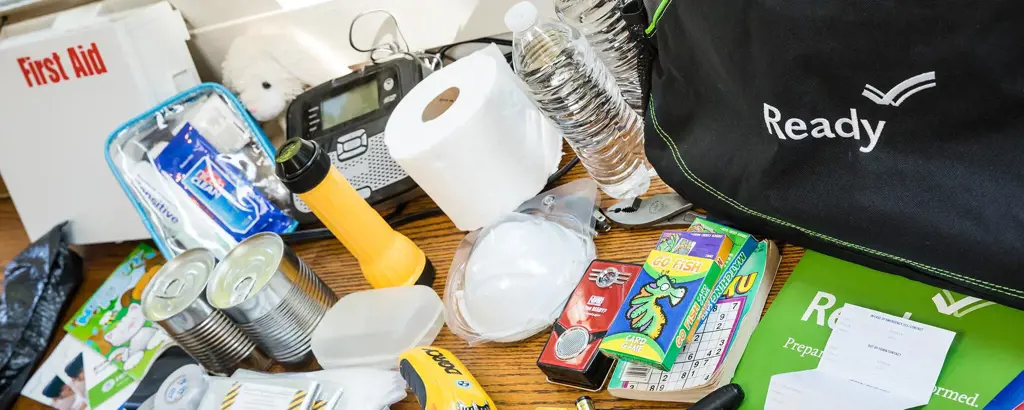
An emergency kit is an essential component of any household's disaster preparedness plan. When a natural disaster strikes, it is important to have supplies readily available to ensure the well-being and safety of you and your family. Here are some essential items that should be included in an emergency kit for a natural disaster:
Water:
Water is the most important item to include in your emergency kit. It is recommended to have at least one gallon of water per person per day for a minimum of three days. This water can be used for drinking, cooking, and hygiene purposes. It is important to regularly check and replace the water in your emergency kit to ensure its freshness.
Non-perishable food:
Include a supply of non-perishable food items in your emergency kit. These can include canned goods, dried fruits, granola bars, and other food items that do not require refrigeration. Make sure to include a manual can opener as well.
Medications and first aid supplies:
In times of disaster, access to medical facilities may be limited. It is crucial to have a supply of necessary medications and first aid supplies in your emergency kit. Include items such as bandages, antiseptic ointment, pain relievers, and any prescription medications that you or your family members may need.
Flashlight and batteries:
Power outages are common during natural disasters. Include a flashlight with extra batteries in your emergency kit to ensure you have a reliable source of light. Consider including a battery-powered lantern as well for a broader source of illumination.
Whistle:
A whistle is a simple yet effective tool for signaling for help during an emergency. Include a whistle in your emergency kit to attract attention if you find yourself in a situation where you need assistance.
Cash:
In the event of a natural disaster, ATMs and credit card machines may not be operational. It is a good idea to include some cash in your emergency kit to ensure you have access to funds for purchasing necessary items or services during the aftermath of a disaster.
Personal hygiene items:
Pack personal hygiene items such as toothbrushes, toothpaste, soap, and sanitary supplies in your emergency kit. These items are important for maintaining cleanliness and preventing the spread of germs during challenging circumstances.
Tarp and duct tape:
In case your home sustains damage during a natural disaster, it is useful to have a tarp and duct tape in your emergency kit. These items can be used to temporarily patch up leaks or cover broken windows until repairs can be made.
Extra clothing:
Include a change of clothes and sturdy shoes in your emergency kit. These items can provide comfort and protection during and after a natural disaster.
Important documents:
Make copies of important documents such as identification cards, insurance policies, and birth certificates, and keep them in a waterproof bag or container in your emergency kit. These documents are crucial for proving your identity and filing insurance claims in the aftermath of a disaster.
In addition to these essential items, it is important to regularly check and update your emergency kit. Replace expired food and medications, update contact information, and ensure that all items are in good working condition. By being prepared and having an emergency kit ready, you can increase your chances of staying safe and secure during a natural disaster.
Must-Have Beauty Essentials to Pack for Your Vacation
You may want to see also

Are there any specific items that should be packed for different types of natural disasters (e.g., hurricanes, earthquakes, floods)?
_20231224013851.webp)
When it comes to natural disasters, being prepared is crucial. Different types of disasters require different types of supplies and items to be packed in order to ensure the safety and well-being of individuals and families. Here, we will address some specific items that should be packed for different types of natural disasters, such as hurricanes, earthquakes, and floods.
Hurricanes:
Hurricanes are characterized by strong winds, heavy rainfall, and storm surges that can cause extensive damage. When preparing for a hurricane, it is important to have the following items packed:
- Non-perishable food and water: It is recommended to have at least three days' worth of food and water for each person. Canned goods, dry snacks, and bottled water are good options.
- Battery-powered or hand-crank radio: This will help you stay informed about the latest updates and warnings during the hurricane.
- Flashlight and extra batteries: Power outages are common during hurricanes, so having a reliable source of light is essential.
- First aid kit: A well-stocked first aid kit should include bandages, antiseptic ointments, pain relievers, and any necessary prescription medications.
- Personal hygiene items: Pack items such as toilet paper, soap, hand sanitizer, and baby wipes.
Earthquakes:
Earthquakes are sudden and often unpredictable events that can cause significant damage to infrastructure and pose a risk to personal safety. Here are some items to consider including in your earthquake preparedness kit:
- Flashlight and spare batteries: Electricity can be disrupted during an earthquake, so having a reliable source of light is essential.
- Portable, battery-powered radio: This will help keep you informed about any emergency broadcasts or updates.
- Dust masks or respirators: In the aftermath of an earthquake, there may be dust, debris, or other airborne contaminants that can be harmful to breathe.
- Water and non-perishable food: Similar to hurricane preparedness, it is recommended to have at least three days' worth of water and non-perishable food on hand.
- Sturdy shoes and gloves: After an earthquake, there may be broken glass, sharp objects, or other hazards on the ground. Sturdy shoes and gloves can protect against injuries.
Floods:
Floods can occur due to heavy rain, melting snow, or dam failures, and can cause extensive damage to homes and infrastructure. Here are some items to consider including in your flood preparedness kit:
- Waterproof containers for important documents: Store your important identification documents, insurance policies, and other critical papers in waterproof containers to protect them from water damage.
- Emergency drinking water: If your regular water supply becomes contaminated or cut off, have a supply of emergency drinking water on hand.
- Life jackets and inflatable rafts: In the event of a flood, these items can be crucial for safely navigating floodwaters and staying afloat.
- Water purification tablets or filters: In case your water supply becomes contaminated, water purification tablets or filters can help make water safe for drinking.
- Cleaning supplies: After a flood, there will likely be a need for cleaning and disinfecting affected areas. Pack items such as bleach, gloves, and cleaning brushes.
While these are some general guidelines for packing items for different types of natural disasters, it is important to customize your emergency kit based on the specific needs of your location and situation. Consider factors such as the severity of the disaster, the likelihood of evacuation, and the specific requirements of family members, including children and pets. Additionally, regularly check and update your supplies to ensure that they are not expired or damaged. Being prepared can make a significant difference in your ability to stay safe during a natural disaster.
Essential Items to Pack First When Moving Your Bedroom
You may want to see also

Should important documents such as passports, IDs, and insurance papers be included in the emergency pack? If so, how should they be protected?
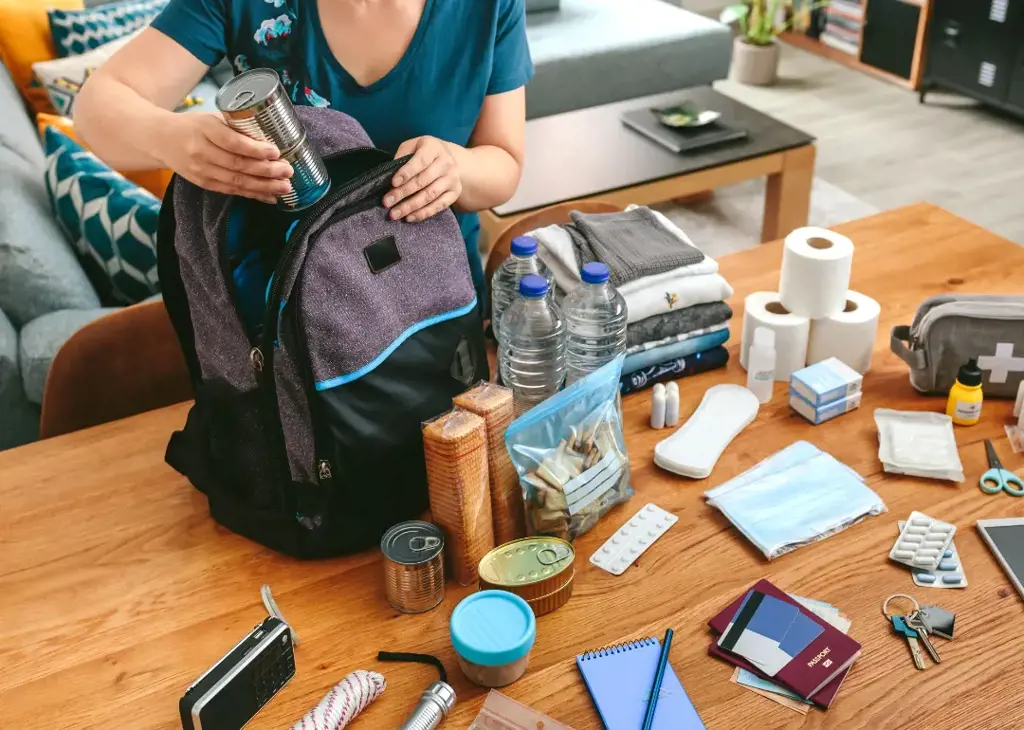
In times of emergency, having important documents readily available can make a big difference in terms of safety and security. Passports, IDs, and insurance papers are crucial documents that may be needed during evacuations, medical emergencies, or when dealing with unexpected events. It is highly recommended to include these documents in your emergency pack, but it is equally important to ensure their protection.
Importance of including important documents:
Having your passport and identification documents easily accessible during an emergency can help facilitate travel arrangements, entry into shelters or safe zones, and expedite any necessary assistance or medical treatment. Insurance papers are also essential as they provide proof of coverage and can help streamline the claims process in case of property damage, injuries, or medical emergencies.
Protecting the documents:
To ensure the safety and protection of your important documents, consider the following steps:
A. Waterproof container: Use a waterproof container or bag to store your documents. This will protect them from water damage in case of flooding or heavy rains.
B. Secure storage: Keep the documents in a safe and easily accessible spot within your emergency pack. Consider using zip-lock bags or document envelopes with a secure closure to keep them organized and well-protected.
C. Make copies: Before including the original documents, make photocopies or digital scans of each item. Keep these copies in a separate location, such as a cloud storage service, or give them to a trusted family member or friend. This ensures that even if the originals are lost or damaged, you will have a backup to reference.
D. Document protection sleeves: Consider using document protection sleeves to further safeguard your passports and IDs. These sleeves are made of clear, durable materials that prevent tearing, water damage, and other forms of wear and tear.
E. Additional protection: If you live in an area prone to natural disasters or emergencies, you may want to consider investing in a fireproof and waterproof safe. This will provide an extra layer of protection for your important documents.
Examples:
- During a hurricane, residents may be required to evacuate and seek shelter in designated areas. Having your passport and identification readily available will help ensure a smoother evacuation process and provide proof of identity if necessary.
- In the case of a house fire, having your insurance papers easily accessible can help you quickly report the incident to your insurance company and start the claims process for any damages or losses.
Scientific findings:
A study published in the Journal of Emergency Management found that individuals who included important documents in their emergency pack were better prepared and had a higher likelihood of recovering from a disaster more efficiently. The study emphasized the importance of protecting these documents to ensure their usability and prompt access during emergencies.
In conclusion, including important documents such as passports, IDs, and insurance papers in your emergency pack is crucial for preparedness and safety. By following simple steps to protect these documents, such as using waterproof containers, making copies, and investing in protective sleeves or a safe, you can ensure their accessibility and usability in times of need.
The Essential Footwear Guide for Exploring South America
You may want to see also

How much food and water should be packed per person for a natural disaster?
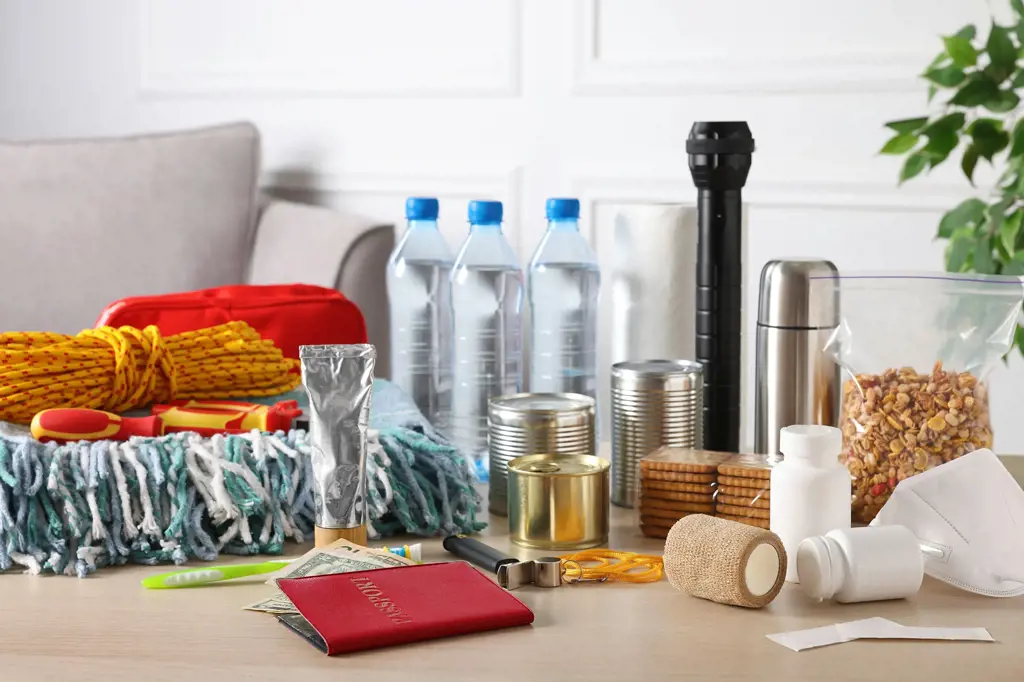
When preparing for a natural disaster, it is essential to make sure you have enough food and water stocked up to sustain yourself and your family for an extended period of time. The amount of food and water you should pack per person will depend on various factors such as the duration of the disaster, the number of people in your household, and individual dietary needs. In this article, we will discuss the general guidelines on how much food and water you should pack per person for a natural disaster.
Water is the most crucial resource during a disaster. The general rule of thumb is to have at least one gallon (3.8 liters) of water per person per day. This amount includes both drinking water and water for basic hygiene needs such as cooking and cleaning. If you anticipate a longer disaster or if you have medical needs that require extra water, it is advisable to increase this amount accordingly. It is also important to store water in sturdy, food-grade containers and to rotate your water supply every six months to ensure its freshness.
In terms of food, it is recommended to have a well-balanced mix of non-perishable items that provide enough calories and nutrients to sustain you. Aim for a two-week supply of food per person, and select items that do not require refrigeration, cooking, or special preparation. Canned goods, dried fruits and nuts, granola bars, and ready-to-eat meals are good options. Make sure to include a variety of foods to maintain a balanced diet, and consider any specific dietary restrictions or allergies within your household.
To get a more accurate estimation of how much food you should pack, it is helpful to create a meal plan based on the number of people in your household and their typical dietary habits. Calculate the number of calories needed per day for each person and multiply it by the number of days you anticipate the disaster to last. This will give you a rough idea of the total number of calories required. Consider the nutritional value of the food you are packing as well, ensuring a good mix of proteins, carbohydrates, and fats.
Here is a step-by-step process to help you calculate the amount of food you should pack for a natural disaster:
- Determine the number of people in your household.
- Calculate the number of calories each person needs per day. This will depend on factors such as age, gender, and activity level.
- Multiply the number of calories per person per day by the anticipated number of days the disaster will last. This will give you the total number of calories needed.
- Select a variety of non-perishable food items that meet the calorie and nutritional requirements, considering the preferences and dietary restrictions of your household members.
- Calculate the number of servings per item based on the nutritional information on the packaging. Divide the total number of calories needed by the average number of calories per serving to determine the number of servings required.
- Multiply the number of servings per item by the number of people in your household to determine the total quantity of each item needed.
- Make a shopping list based on the quantities required, and ensure you have sufficient storage space to keep the food items safe and easily accessible.
It is important to regularly check the expiration dates on your stored food and water, and rotate your supplies accordingly. This will ensure that your emergency provisions remain fresh and effective when you need them.
In conclusion, when preparing for a natural disaster, it is crucial to pack enough food and water to sustain yourself and your family. Aim for one gallon of water per person per day, and a two-week supply of non-perishable food items. Consider individual dietary needs and preferences, and calculate the number of calories and servings required based on the anticipated duration of the disaster. Regularly check and rotate your supplies to ensure their freshness and effectiveness. By following these guidelines, you can be better prepared to handle a natural disaster and ensure the well-being of your household.
A Comprehensive Guide on What to Pack for Medellin, Colombia
You may want to see also

Are there any items commonly overlooked when packing for a natural disaster that people should be aware of?
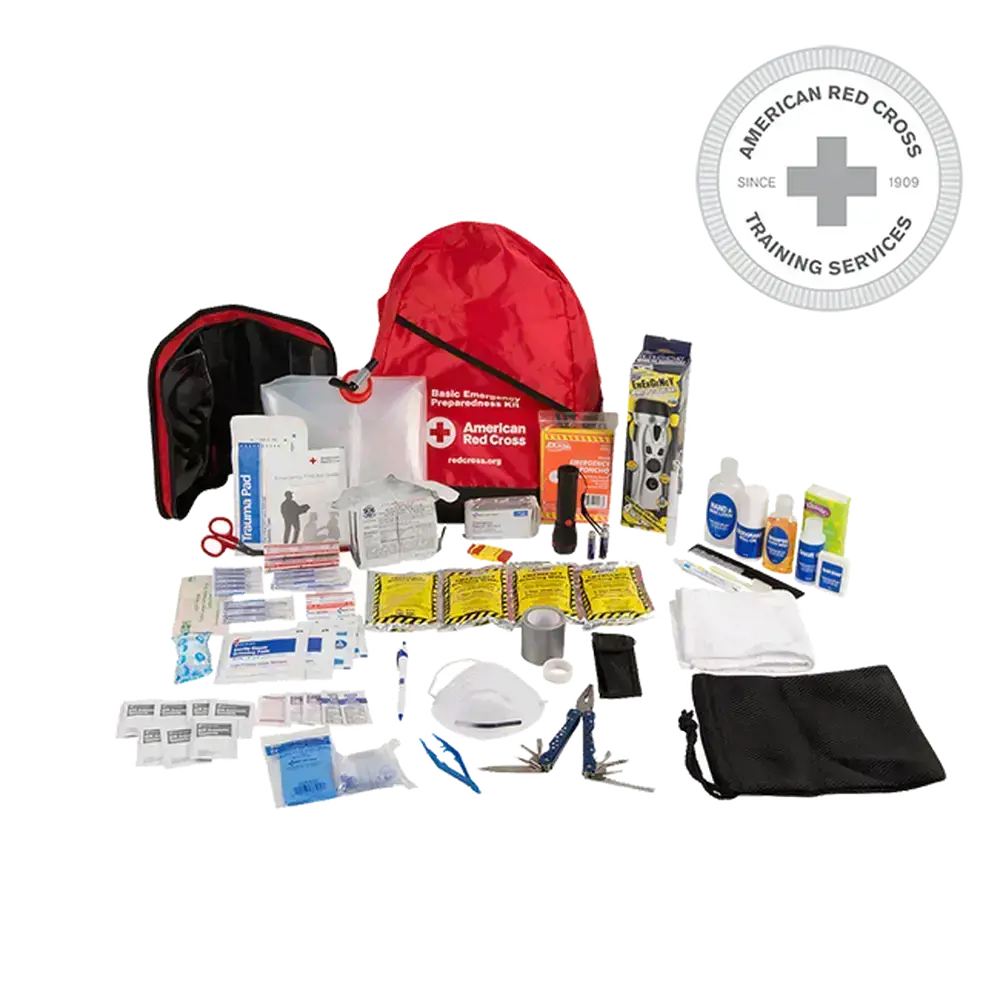
When preparing for a natural disaster, it is important to make sure you have all the essential items needed to ensure your safety and well-being. While many people are aware of the basic necessities such as food, water, and a first aid kit, there are often overlooked items that can be crucial during such emergencies. Here, we will discuss some of these commonly overlooked items and why they are important to include in your disaster preparedness kit.
- Prescription Medications: If you or anyone in your family takes prescription medications, it is important to have an ample supply on hand. During a natural disaster, access to pharmacies may be limited or even impossible, so having enough medication to last several days or weeks is crucial. Make sure to rotate these medications regularly to ensure they do not expire.
- Personal Hygiene Items: In the chaos of an emergency, personal hygiene items such as toilet paper, soap, and toothpaste often get overlooked. These items may seem trivial, but they are essential for maintaining cleanliness and preventing the spread of germs. Having a stockpile of these items can provide a sense of normalcy during a stressful time.
- Spare Glasses and Contact Lenses: For those who wear glasses or contact lenses, having a spare pair is essential. If your primary pair gets damaged or lost during the disaster, you may find yourself unable to see clearly, which can hinder your ability to navigate and find resources. Ensure you have a backup pair in a safe and easily accessible place.
- Pet Supplies: If you have pets, don't forget to include their necessities in your disaster preparedness kit. This includes food, water, litter, medication, and any other supplies they may need. During a natural disaster, it may be difficult to find these supplies, so having them on hand can ensure the well-being of your furry friends.
- Important Documents: In the event of a natural disaster, it is crucial to have copies of important documents such as identification papers, insurance policies, and medical records. These documents can be essential when dealing with authorities, insurance companies, or medical professionals. Keep these copies in a waterproof and easily accessible container.
- Cash: During a natural disaster, power outages and limited access to banks or ATMs can make electronic forms of payment unreliable. It is important to have a stash of cash on hand in small denominations to use for essential purchases or emergencies. Aim to have enough cash to cover expenses for several days.
- Portable Power Bank: In today's technology-dependent world, having a portable power bank for your electronic devices can be a lifesaver. It can allow you to stay connected with loved ones, access important information, and call for help if needed. Make sure to charge the power bank regularly and have a backup charging cable on hand.
- Comfort Items: Natural disasters can be emotionally and physically exhausting. Having comfort items such as a favorite book, games, a blanket, or a stuffed animal can provide a sense of normalcy and help alleviate stress during difficult times. These items may not be essential for survival, but they can greatly improve your well-being.
It is crucial to remember that every natural disaster is unique, and the items needed may vary depending on the situation. It is important to stay informed about the specific risks and recommendations for your area. Consult local authorities, disaster preparedness organizations, or emergency management agencies for specific guidelines and suggestions. By being prepared and including commonly overlooked items in your disaster preparedness kit, you can increase your chances of weathering the storm safely and comfortably.
The Essential Guide: What to Pack for a Cruise and Travel Light
You may want to see also
Frequently asked questions
When preparing for a natural disaster, it is important to have an emergency supply kit that includes essential items. This kit should include non-perishable food items such as canned goods, granola bars, and ready-to-eat meals. It is also important to have an ample supply of water, at least one gallon per person per day, and a water purification system. Additionally, you should pack a first aid kit, toiletries, extra clothing, blankets or sleeping bags, flashlights with extra batteries, a battery-operated radio, and a whistle to signal for help.
Yes, it is essential to pack important documents in case of a natural disaster. These documents include copies of identification cards for all household members, personal and medical information, insurance policies, passports, birth certificates, and social security cards. It is recommended to keep these documents in a waterproof and portable container, such as a plastic ziplock bag or a fireproof safe. It is also a good idea to have digital copies of these documents stored in a secure online location.
In addition to the basic necessities and important documents, there are a few other items you should consider packing for a natural disaster. These include a manual can opener, a multi-purpose tool, cash and coins, a local map, a solar charger or battery pack for your electronic devices, a whistle to signal for help, a dust mask to filter contaminated air, and any necessary prescription medications. It is also important to pack comfort items such as toys, books, and games, especially if you have children, to help keep spirits up during difficult times.







